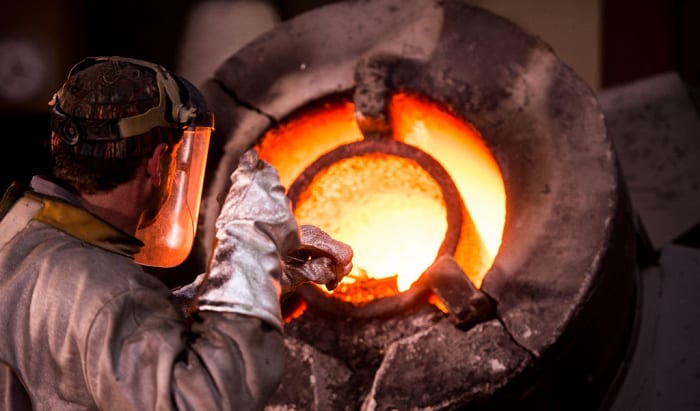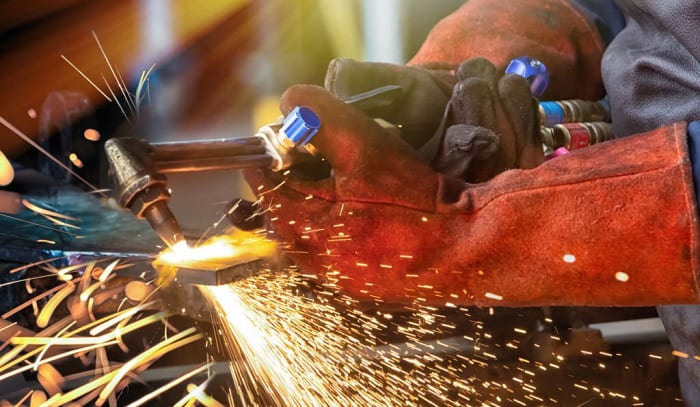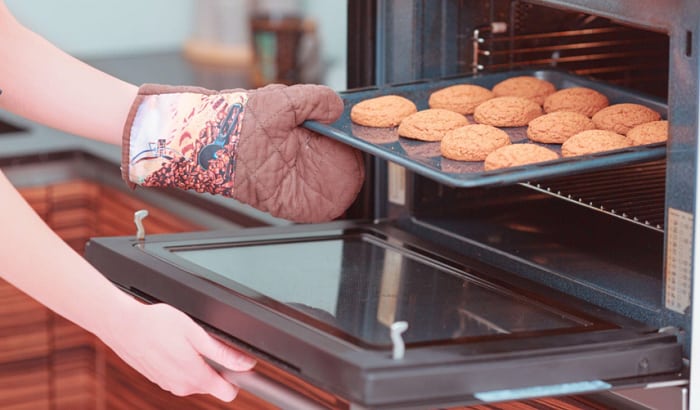Remember the kitchen towel you grab to pull a hot dish out of the oven? The same material is used to make heat-resistant gloves – terry cloth. It can withstand heat contact below 450°F.
To strengthen the terry knit, manufacturers add acrylic linings, silicone grips, quilted cotton twill, or neoprene shells. Other thermal synthetic materials like Kevlar® can offer even more resistance. They are for heat-resistant gloves in industrial uses and can resist up to 800°F. To know more about the material of heat-resistant gloves, let’s find out this article on what are heat-resistant gloves made of below!
About the Materials for Heat-resistant Gloves
Heat-resistant glove definition is the PPEs that protect hands from high heat. They are made of heating-insulting or heat-resistant fibers.
Heat-insulating fibers are terry cloth and leather. They work by creating a thick layer that heat takes time to pass through. Heat-resistant fibers are Aramid fibers, silicone, and neoprene. They naturally have special molecule structures that heat can’t penetrate.
1. Low heat-resistant materials (Terry cloth and leather)
Terry cloth is traditionally from cotton, but nowadays, manufacturers also use silk, linen, and other synthetic fibers (e.g., polyester, blends). It is good for heat contact below 450°F (232°C). Most kitchen and oven mitts are made of terry knit.
To boost the protection, companies might double knit the cotton, add quilted cotton twill on the exterior, use thick cloth for the interior, and reinforce the gloves with acrylic linings.
However, terry cloth is flammable. If you accidentally touch a 500°F electric stove with the gloves, they will catch fire. That is when leather comes into play. When contacting heat beyond its capacity, leather will shrink and release smoke; yet, it never starts a fire.
Leather can resist short-time heat exposure of 390°F (200°C). Leather gloves also allow better finger movements than regular oven mitts. But both terry cloth and leather will decompose when you expose them to temperatures above their limits.
2. Medium heat-resistant materials (Silicone)
Silicone can withstand up to 450°F (232°C), but it is much safer than terry cloth. You will find silicone in BBQ gloves instead of leather or cloth because the job involves handling fires.
This video compares terry cloth and silicone heat-resistant gloves in detail:
Companies can also combine silicone and cotton in a pair of gloves to enhance protection and comfort. They might use an exterior of flame-resistant silicone grip and an interior of double-knit cotton. Such thermal gloves can provide a barrier against 540°F.
So, what about metallurgy and metalwork? What gloves can protect workers’ hands under such extreme temperatures?
3. High heat-resistant materials (Aramid fibers)
Can you believe a fabric can be ten times stronger than steel? It is Kevlar®, a subclass of Aramid. Its para-aramid structure contains numerous inter-chain bonds that are almost impossible to separate. The structure creates a solid barrier against thermal hazards of up to 800°F (430°C).
Besides, Kevlar® doesn’t melt or go up in flames. It is safe for hazardous jobs like welding. The downside of Kevlar® is its high production cost. Thus, manufacturers often use it as a shell over terry lining gloves.
Kevlar® can be machine-knitted into thinner and more flexible fabrics. These fabrics lower a glove’s protective level but increase dexterity. You must check the glove’s ASTM F1060 or EN 407 ratings to know its resistance level.
Frequently Asked Questions
Do heat-resistant gloves come with any limitations?
Yes, they do. Heat-resistant gloves are only for short contact with hot objects. Remember that the longer you handle the heat, the higher the temperature will get. As the temperature rises, the gloves will quickly reach their limit and deteriorate.
Heat-resistant gloves do not resist flames unless the manufacturer claims so on the label. They can catch fires when meeting a direct flame or an overly-heated object. High heat-resistant gloves are also costly, especially if the task requires dexterity and comfort.
What are heat-resistant glove applications?
Heat-resistant gloves’ uses are necessary for multiple industries. They are helpful in the kitchen, at a BBQ party, or a welding facility. Firefighters’ PPEs are also heat and flame-resistant. The gloves protect workers in any field that involves handling heat and fire.
Are rubber gloves heat-resistant?
There are many types of rubber: nitrile, latex, neoprene, vinyl, etc. Silicone is also a form of synthetic rubber. Thus, you can find rubber gloves that can withstand high temperatures. Latex and nitrile are not used to make thermal gloves, but neoprene and silicone are highly heat-resistant.
Conclusion
New inventions and technologies truly push the limits of possibility. Some brands have already introduced gloves that can withstand heat up to 2000°F (1095°C), which is the temperature of bright red lava.
To wrap up, the answer to “What are heat-resistant gloves made of?” is terry cloth, leather, neoprene, silicone, and Aramid fibers. Each material has a different resistance level. Companies can also blend and combine the materials, depending on the end purpose of the gloves.

Veronica is our content editor. She is a talent in delivery. Her main work is editing and writing articles that are both informative and simple to follow. She is in charge of synthesizing our understanding of what personal protection equipment (PPE) is needed in each job, how to best apply it, and how to visualize that equipment.




